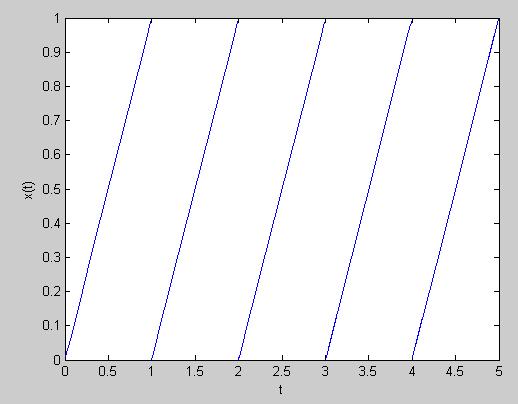Contents
[hide]Periodic CT Signal
From Homework 1:
$ x(t)\;=\;sin(\frac{3}{4}t) $
Sampling the signal at a frequency that is a rational multiple of the frequency of the signal will result in a periodic DT signal. Sampling the signal at a frequency that is not a rational multiple of the frequency of the signal will result in a non-periodic DT signal.
$ 2\pi f=\frac{3}{4} $
$ f=\frac{3}{8\pi} $
Periodic DT Signal
Sampling the signal at a frequency $ f=\frac{3}{2\pi} $ (four times the original frequency) yields a new frequency for the periodic DT signal $ f_{DT}=\frac{1}{4} $, resulting in $ x(t)=sin(\frac{1}{2}\pi t) $, which is clearly periodic (the repeating pattern: 0,1,0,-1,0,1,0).
Non-Periodic DT Signal
Sampling the signal at a frequency $ f=3 $ ($ 8\pi $ times the original frequency) yields a new frequency for the periodic DT signal $ f_{DT}=\frac{1}{8\pi} $, resulting in $ x(t)=sin(\frac{1}{4}t) $, which is clearly non-periodic. There is no integer multiple of $ \frac{1}{f_{DT}}=8\pi $ that is also an integer.
Shifted Copies of a Non-Periodic Signal
A very obvious non-periodic signal from HW1 is $ x(t) = t $. By concatenating an infinite number of shifted copies of $ x(t) $ together, the following signal is obtained:


